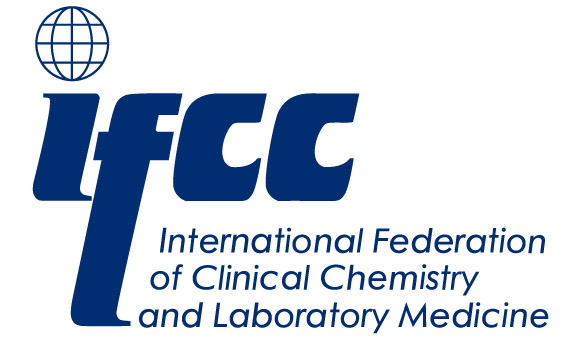Authors: Francisco M. Marty, M.D., Kaiwen Chen, B.S., and Kelly A. Verrill, R.N.
Overview
Collection of specimens from the surface of the respiratory mucosa with nasopharyngeal swabs is a procedure used for the diagnosis of Covid-19 in adults and children.1-4 The procedure is also commonly used to evaluate patients with suspected respiratory infection caused by other viruses and some bacteria. This video describes the collection of nasopharyngeal specimens for detection of Covid-19, the illness caused by infection with severe acute respiratory syndrome coronavirus 2 (SARS-CoV-2).
There are no specific contraindications for collecting specimens with nasopharyngeal swabs. However, clinicians should be cautious if the patient has had recent nasal trauma or surgery, has a markedly deviated nasal septum, or has a history of chronically blocked nasal passages or severe coagulopathy.
Preparation and Equipment
Nasopharyngeal swabs are specifically manufactured to have long, flexible shafts made of plastic or metal and tips made of polyester, rayon, or flocked nylon. In addition to nasopharyngeal swabs, you will need personal protective equipment (PPE), including a gown, nonsterile gloves, a protective mask, and a face shield, as described below. Make sure that all sample tubes have been labeled and that the appropriate requisition forms have been filled out before starting the procedure.
It is essential that you follow the pertinent respiratory and contact precautions specified by the Centers for Disease Control and Prevention (CDC) and by your own institution and that you put on the PPE correctly (Figure 1). If possible, you should put on and take off the PPE in the presence of an observer to make sure there are no breaks in technique that may pose a risk of contamination.
First, put on a protective gown, wash your hands with soap and water (or use an alcohol-based solution), and put on a pair of nonsterile gloves. Then put on a protective mask with a rating of N95 or higher, as recommended by the CDC. Finally, put on a face shield for face and eye protection.

Procedure
Masks are recommended for all patients suspected of having Covid-19 (Figure 2). Ask the patient to take off her mask and blow her nose into a tissue to clear excess secretions from the nasal passages. Remove the swab from the packaging. Tilt the patient’s head back slightly, so that the nasal passages become more accessible. Ask the patient to close her eyes to lessen the mild discomfort of the procedure. Gently insert the swab along the nasal septum, just above the floor of the nasal passage, to the nasopharynx, until resistance is felt (Figure 3).


Insert the swab into the nostril, parallel to the palate. If you detect resistance to the passage of the swab, back off and try reinserting it at a different angle, closer to the floor of the nasal canal. The swab should reach a depth equal to the distance from the nostrils to the outer opening of the ear. The CDC recommends leaving the swab in place for several seconds to absorb secretions and then slowly removing the swab while rotating it. Your institution may also recommend rotating the swab in place several times before removing it. Ask the patient to reapply her mask.
Handling of the Specimen
Open the collection tube and insert the swab into the tube. Break the swab at the groove and discard what remains of the swab. Close the labeled collection tube and place it in a biohazard bag (Figure 4). Depending on institutional practices, you may instead return the sample to its original packaging for transport. Follow the CDC directions for direct processing of the swab specimen or placement of the swab in media with or without refrigeration.

Removing Personal Protective Equipment
Remove your PPE as shown in the video and described here or in accordance with the standards at your institution. First, remove your gown and gloves. Clean your hands with an alcohol-based solution or soap and water. Put on a new pair of gloves, and then remove your face shield and either dispose of it or clean and store it in accordance with the guidelines at your institution. Remove your gloves, rewash your hands, and put on another pair of gloves; then remove your mask and follow your institutional guidelines for disposal or reuse. Finally, remove the last pair of gloves and wash your hands.
https://www.infobioquimica.com/new/wp-content/uploads/2020/04/NEJMdo005746_download.mp4
Summary
This video demonstrates the collection of specimens from the surface of the respiratory mucosa with nasopharyngeal swabs for the diagnosis of Covid-19 in adults and in children. It is important to use approved PPE and the appropriate technique to minimize the possibility of spreading the virus.
Author Affiliations
From the Division of Infectious Diseases, Brigham and Women’s Hospital (F.M.M., K.C.), and the Division of Pediatric Oncology, Dana–Farber/Boston Children’s Cancer and Blood Disorders Center (K.A.V.) — both in Boston.
Address reprint requests to Dr. Marty at the Division of Infectious Diseases, Brigham and Women’s Hospital, 75 Francis St., PBB-A4, Boston, MA 02115, or at fmarty@bwh.harvard.edu.
Source: nejm.org











































